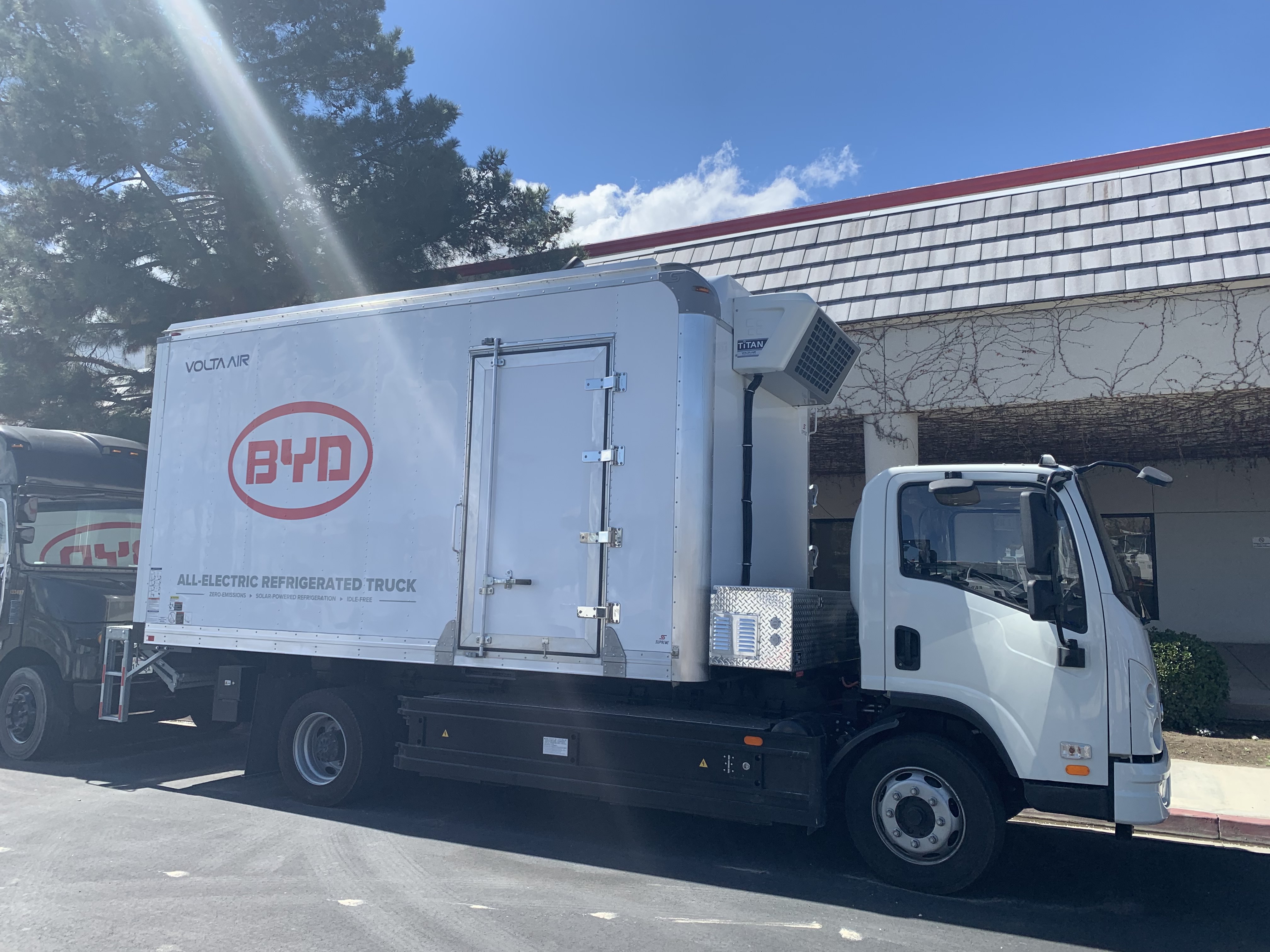Americans are driving bigger vehicles and more miles than ever following a sustained drop in fuel prices that began a few years ago. Pickup trucks reign supreme in the US, claiming the top three spots of all vehicles sold in 2018. Ford sold more than 909,000 trucks last year, eclipsing competitors and leaving the highest-selling electric vehicle (EV)—the Tesla Model 3—in the rearview, despite its record-breaking 140,000 units sold. Ford has said that large vehicles are positioned to take over 90% of its total US production by 2020.
While the broader American medium- and heavy-duty truck market is strong, the US lags behind other countries in efforts to electrify this popular and critical sector of the auto industry.
And yet the electric truck market is growing rapidly around the world. Electrification dominated the discussion at this year’s World Truck Show in Indiana. If we are to meet emission-reduction goals for the transportation sector and advance environmental justice, it is past time for vehicles—of all class sizes—to be electrified in the US.
Electric Pickup Trucks: Where We Stand
Slowly and quietly, the auto giants are responding to a push for electrification of pickup trucks. Ford has committed to an all-electric F-150 amid plans to introduce 16 all-electric models by 2022. Tesla leads a crowd of start-ups lighting fires under the bigger automakers, with plans released for a concept super pickup and sightings of wrapped trucks on carriers. New competitors like Rivian are flaunting futuristic prototypes with impressive specs on pickup trucks geared to the adventurous off-road drivers. The Michigan-based start-up recently brought in a massive $700 million investment spearheaded by Amazon, earning a lot of attention across the industry. Start-ups like Workhorse are looking to corner the plug-in hybrid truck market, challenging the F-150 hybrid promised in 2020, with battery-only range of up to 80 miles.
Still, it is unlikely that an all-electric pickup will hit the market until 2020, and the technology will face challenges. Despite excitement around this new field, Ford and fellow “Big Three” members General Motors and Fiat-Chrysler are up to their old tricks by prioritizing and pouring money into new gas-powered models instead of new electric and hybrid models. Ford has been flagged, along with other industry leaders including GM, for its failure to promote electric cars at both corporate and dealership levels.
Meanwhile, start-ups are taking the technical challenges in stride, testing all-electric trucks that outcompete conventional models. While some (including Atlis) have drawn heavy skepticism, leaders like Rivian are pumping out real vehicles boasting ranges of up to 400 miles and charging times as short as 30 minutes. Range anxieties are complicated when trucks are loaded with weight. Designed to carry loads over 1,000 pounds, conventional pickups have traditionally sacrificed fuel efficiency to accommodate greater performance. Research suggests workarounds, and this issue hasn’t seemed to hinder innovation so far. High-performance prototypes are setting high bars for the "Big Three" automakers if they want to stay relevant in this emerging market. Unfortunately, industry leaders like GM are opting out entirely.
The medium- and heavy-duty sector of the electric vehicle market is expected to grow six times over by 2025. Recent announcements from Volvo and Daimler continue to position Europe as a leader in the space, with the US lagging behind due to a lack of regulatory pressure. As usual, California leads the way, with big commitments to all-electric trucks through the VW settlement and early success under the Hybrid and Zero-Emission Truck and Bus Voucher Incentive Project and the California Climate Investments programs.
It's no secret that truck electrification is an equity issue. Low-income communities of color disproportionately bear the burden of truck pollution, which contains dangerous particulate matter that triggers respiratory illnesses. Grassroots groups and coalitions in California are at the forefront of pushing for accelerated electrification in the heavy-duty sector, especially for communities located next to large distribution centers for big brands like Amazon and Walmart.
Despite huge funding opportunities provided by the VW Settlement, only California has promised aggressive investment in electric trucks. Patchy public investment has raised concerns about the ability of the existing charging infrastructure to support growing demand for electric trucks. In the absence of strong regulatory support, the private sector has begun to pick up some slack. In 2017, UPS announced plans to convert 1,500 of its trucks in New York City to electric. Startups like Workhorse and Cityfreighter are hoping to supply their own electric delivery trucks for last-mile deliveries in urban centers.
Determined to not let the Europeans have all the fun, Tesla has thrown itself into the heavy-duty sector with prototypes for a potentially path-breaking automated electric semi truck. Boasting an estimated range of between 300 and 500 miles, Tesla seeks to one-up Daimler’s eCascadia model, which has an estimated range of 230 miles. The semi may be commercially available sooner than expected, and potential customers are now able to pay up to $200,000 to reserve early models.
Despite significant progress over the last several years, the road to a future where electric trucks dominate in the US is long and winding. Efforts to promote electric trucks must extend from the manufacturer throughout the dealership network, and state efforts must be reinforced with federal incentives and support. As long as regulatory pressure lags, the US will lose control of the market, and those who wait will be left in the dust as the electric truck sector booms. Meanwhile, communities around the country inhale dirty air as they wait for their country to catch up and accelerate.
Sierra Club Senior Campaign Representative Carlo De La Cruz also contributed to this article.
